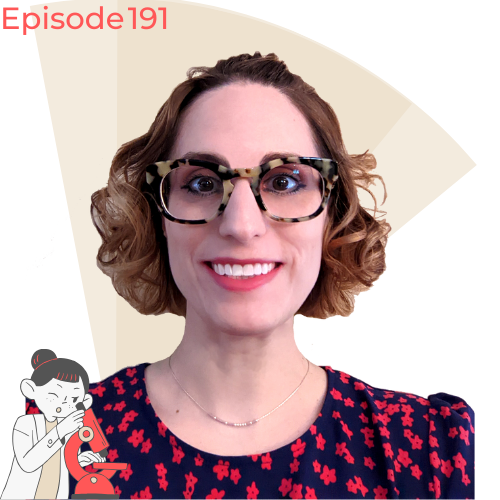What to Expect:
In this episode, Jessica Henty-Ridilla delves into her research on the cytoskeleton and its role in neurodegenerative diseases. Jessica shares her journey from plant biology to neurobiology and discusses her work on understanding the regulation of actin and microtubules in cells.
About the Guest:
Jessica Henty-Ridilla
Jessica Henty-Ridilla is an assistant professor at Upstate Medical University SUNY specializing in the cytoskeleton. Her research focuses on the regulation of actin and microtubules in cells, particularly in the context of neurodegenerative diseases such as amyotrophic lateral sclerosis (ALS). Jessica’s interdisciplinary background spans plant biology and neurobiology.

🌟 Key Takeaways from This Episode:
- Cytoskeleton Research: Investigating the regulation of actin and microtubules in cells.
- Career Journey: From plant biology to neurodegenerative research.
- Favorite Experiment: Exploring the role of TDP-43 in regulating the cytoskeleton.
🔬 In This Episode, We Cover:
Jessica’s Research
Jessica’s research focuses on understanding the regulation of actin and microtubules in cells. These proteins are crucial for maintaining cell shape, division, and movement. Her work aims to uncover how their regulation goes awry in neurodegenerative diseases, such as ALS, and other disorders.
Jessica’s Career Journey
Jessica’s academic journey began with a Bachelor’s in Plant Biology. She pursued her passion for the cytoskeleton, leading her to study its regulation in neurodegenerative diseases. Her diverse experiences have enriched her research perspectives and expertise.
Jessica’s Favourite Research Experiment
Jessica’s favorite experiment involves exploring the role of TDP-43 in regulating the cytoskeleton. TDP-43 is a protein that gets misregulated in many neurodegenerative diseases. Her work aims to understand how this protein influences the cytoskeleton and its potential role in disease mechanisms.
Life as a Scientist: Beyond the Lab
Jessica values the collaborative nature of scientific research and enjoys engaging with the global scientific community. She is passionate about teaching and mentoring the next generation of scientists and values the opportunities to solve complex biological puzzles.
Jessica’s 3 Wishes
- Increased funding for research: Jessica wishes for more financial support to advance innovative research projects.
- Greater collaboration between researchers: She advocates for stronger partnerships to enhance knowledge sharing and collaborative efforts in research.
- Improved public understanding of scientific research: Jessica emphasizes the importance of public awareness and support for scientific advancements.
Jessica’s Time on @RealSci_Nano
Jessica will be taking over the RealSci_Nano Twitter account to share her research on the cytoskeleton and its implications in neurodegenerative diseases. Followers can expect to learn about the intricate dance of proteins within cells and the innovative techniques her work focuses on.
Join the Conversation
Follow & listen to “Under the Microscope” on Spotify, Apple Podcasts, Castbox, Amazon Music, Goodpods.
Got your own favourite podcast app? Follow the RSS link to find Under the Microscope.
Watch the video of all Under the Microscope episodes on The Science Talk’s YouTube channel. While you are at it, make sure to subscribe to our YouTube Channel.
Learn more about Under the Microscope – https://thesciencetalk.com/under-the-microscope/
Love what we do? Support us:
We also offer partnerships to scientists, research institutions, industry, funding bodies & societies.
Get in touch to start the conversation.
